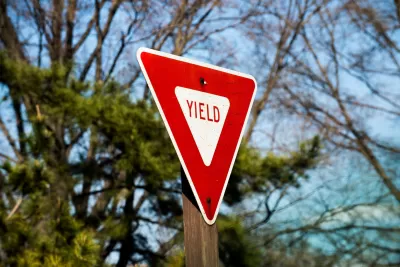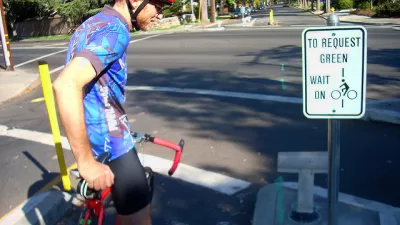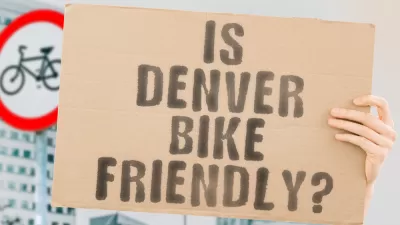The state legislature passed a bill calling for a study of the proposed law and its effects in other states.

State lawmakers in Virginia voted to delay the approval of a proposal that "would have allowed bicyclists to yield instead of halt at stop signs," calling instead for a police study of how the rule has been implemented and its effect in other states. As more people in Virginia use bikes as a primary mode of transportation, proponents of the measure argue that it can save lives. "According to the League of American Bicyclists, 40 percent of cyclist fatalities nationwide are the result of rear-end crashes, which are a concern at stop signs," reports Luz Lazo in The Washington Post. Colorado, Washington state, and Delaware have similar laws. Idaho passed one in the 1980s, letting bicyclists "treat stop signs as yields."
The bill "also voted to require drivers to change lanes when passing bicyclists if three feet of distance isn’t possible and to allow two cyclists to ride side by side in a lane," measures which bicycling advocates praise as "a step forward in making roads safer."
When it comes to treating stop signs as yield signs, Lazo writes, "many bicyclists already do this because it maintains momentum." Opponents claim that "allowing cyclists to abide by a separate set of rules would make their actions less predictable and riders less safe." The legislature called for a study before making a final decision on the issue.
FULL STORY: Virginia says no, for now, to letting bicyclists roll through stop signs

Planetizen Federal Action Tracker
A weekly monitor of how Trump’s orders and actions are impacting planners and planning in America.

Chicago’s Ghost Rails
Just beneath the surface of the modern city lie the remnants of its expansive early 20th-century streetcar system.

San Antonio and Austin are Fusing Into one Massive Megaregion
The region spanning the two central Texas cities is growing fast, posing challenges for local infrastructure and water supplies.

Since Zion's Shuttles Went Electric “The Smog is Gone”
Visitors to Zion National Park can enjoy the canyon via the nation’s first fully electric park shuttle system.

Trump Distributing DOT Safety Funds at 1/10 Rate of Biden
Funds for Safe Streets and other transportation safety and equity programs are being held up by administrative reviews and conflicts with the Trump administration’s priorities.

German Cities Subsidize Taxis for Women Amid Wave of Violence
Free or low-cost taxi rides can help women navigate cities more safely, but critics say the programs don't address the root causes of violence against women.
Urban Design for Planners 1: Software Tools
This six-course series explores essential urban design concepts using open source software and equips planners with the tools they need to participate fully in the urban design process.
Planning for Universal Design
Learn the tools for implementing Universal Design in planning regulations.
planning NEXT
Appalachian Highlands Housing Partners
Mpact (founded as Rail~Volution)
City of Camden Redevelopment Agency
City of Astoria
City of Portland
City of Laramie





























